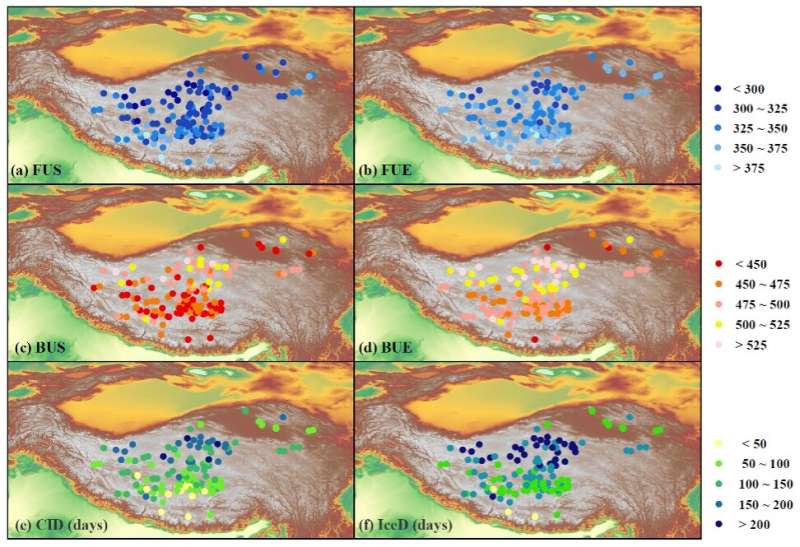Lakes on the Tibetan Plateau freeze later and melt earlier under changing climate, shows study

Lakes on the Tibetan Plateau show a trend of later freezing-up, earlier breaking-up and thus shorten ice-covered duration since the late 1970s, according to a study by researchers from the International Research Center of Big Data for Sustainable Development Goals (CBAS) and the Aerospace Information Research Institute (AIR) of the Chinese Academy of Sciences (CAS).
These findings explicitly reflect the changes in thermodynamics of lakes under a warmer climate and implicate substantial associated alteration in biogeochemical processes in this region.
The study was published in Scientific Data on Dec. 2.
The study was based on the lake ice phenology dataset reconstructed from remote sensing and modeling for 132 lakes over the Tibetan Plateau.
Based on the reconstructed dataset, the research team also reported that for lakes from the southern to northern Tibetan Plateau, the completely ice-covered duration (CID) ranges from 15 days to 215 days. The latitude gradients of CID are 17.5 days/degree. For lakes located between 4,500 to 5,000 m, the altitude gradient of CID is estimated to be 18.9 days/hm.
Ice phenology (i.e., the timing of ice-on and ice-off) records are rarely available for lakes over the Tibetan Plateau due to challenges and cost of ground-based observations. The research team developed a framework by combining the strengths of satellite-based observation and numerical modeling in reconstructing complete, consistent, and continuous time series for 132 lakes across the Tibetan Plateau for the period 1978 to 2016.
The produced dataset can help to understand the response of lake thermodynamics to climate change and the subsequent hydrological and ecological impacts.
More information: Yanhong Wu et al, Ice phenology dataset reconstructed from remote sensing and modelling for lakes over the Tibetan Plateau, Scientific Data (2022). DOI: 10.1038/s41597-022-01863-9
Journal information: Scientific Data
Provided by Chinese Academy of Sciences




















